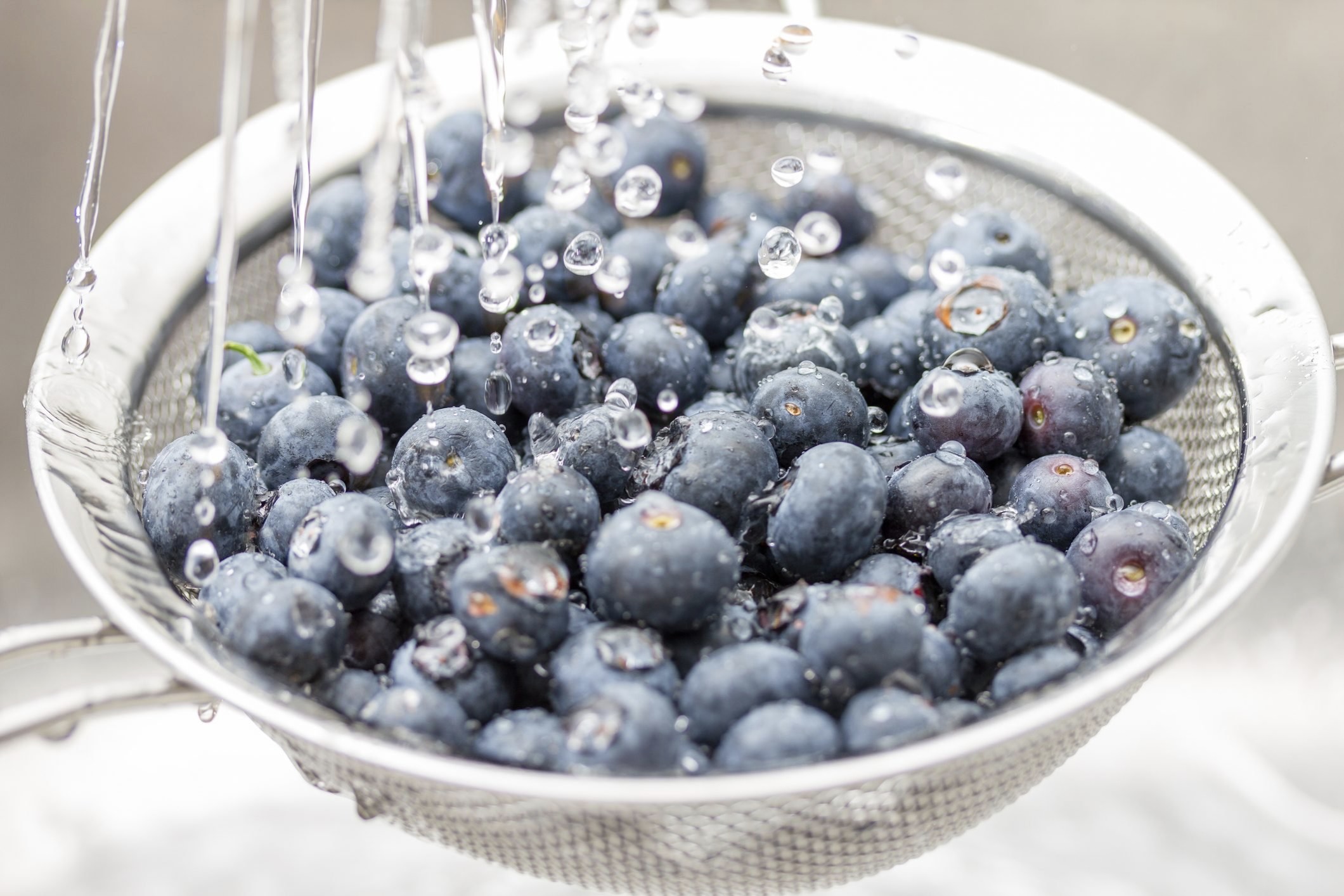Some Important Blueberry Strategy!
For health and safety reasons, it’s important to wash your blueberries before eating them. But did you know, according to experts (whatever that means…) there’s a right way to do this. (I had no idea, actually.)
Along with washing correctly, there’s also a smart way to dry them so they don’t get mushy and moldy. Read on for some important blueberry strategy.

But before diving into these HOW-TOs mentioned above, let’s talk about why it really is needful to wash them well: Although they might look clean, food scientists say they should always be washed because they [can] carry dirt, debris, bugs, parasites, and other contaminants. These contaminants can also carry pathogens which may cause serious foodborne illness.
OK, with the WHY out of the way, here’s the HOW-TO for washing. First, before washing, inspect and remove any that are moldy or broken, as well as debris like leaves or stems. Then, follow these steps:

- Place the blueberries in a colander. If you need to wash a lot of berries, do it in batches to avoid overcrowding and smushing.
- Rinse them under cold running water, gently swishing the berries around with your hands to ensure all the berries are exposed to water.
- Gently shake the colander to remove excess water.
But here’s the deal regarding washing them. You only want to do this just before using them. Always avoid washing blueberries before storing them in the refrigerator, as the extra moisture will cause them to spoil faster. They’ll turn soft and mushy zippy-quick if you wash them before refrigerating.
But once you do wash them, you want to be sure they’re properly dried. Here's the tried-and-true drying method professional chefs and food experts follow:

- Line a rimmed baking sheet with a clean cloth towel or several paper towels.
- Place the blueberries on the towel in a single layer.
- Gently pat the blueberries dry with paper towel(s). You can carefully swirl them around to help remove excess water.
Let the blueberries sit for about five minutes, allowing the towels to soak in the excess moisture.
Another smart idea is to use white vinegar: Just add your berries to a bowl with a 3-to-1 mixture of water and distilled white vinegar. Swirl the berries for about one minute, then rinse them for 30 seconds under cold water to remove the vinegar—and dry as directed above.

Finally, never wash blueberries with soap—there’s no need. Berries can absorb the soap, potentially introducing contaminants. You can also skip the commercial produce washes; there is not much research on their safety and effectiveness, per the
 Alice Osborne
Alice Osborne
Weekly Newsletter Contributor since 2006
Email the author! alice@dvo.com
